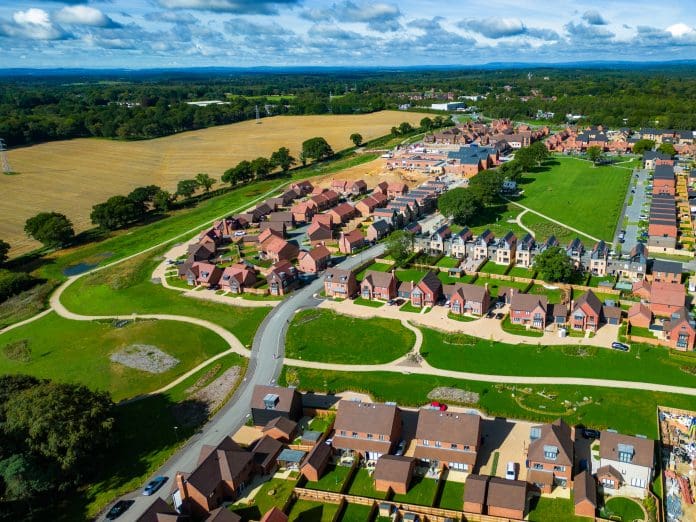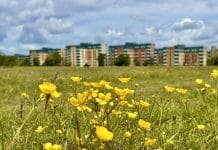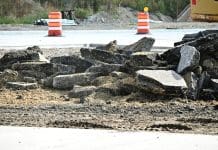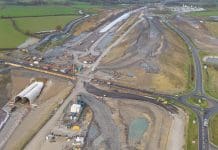
Infrastructure considerations must remain front-of-mind for New Town planners, write Stefanie O’Gorman and Rebecca Dillon-Robinson of Ramboll
A central plank of the government’s plan to tackle the UK’s ongoing housing crisis is to begin developing New Towns across the country, repeating the efforts that led to the creation of a number of New Towns across the UK between 1946 and 1973.
The overall success of the previous New Towns policy is a matter for debate. However, there is no debating Britain’s need for new houses, with the number of households on local authority waiting lists currently comfortably over 1m.
The government has previously announced its intention to deliver 1.5m new homes in the current parliament.
Notwithstanding challenges around the current supply downturn of housing, the New Town policy will also succeed or fail on its integration of successful infrastructure, thus creating places of real value.
For any place to be successful it needs more than just housing. Well planned infrastructure whether energy, transport, water, green or social forms the backbone of sustainable places and should act as an enabler for housing delivery, rather than the other way around.
The urban extension Nordhavn in Copenhagen started with an extension to the metro line that unlocked the development viability of a vast brownfield site.
If, as intended, the majority of these settlements are to be New Towns in nature as well as name, they will need new
infrastructure to serve the residents. Even where they are extensions of existing towns, this will require existing infrastructure to be extended and improved.
Piecemeal to strategic delivery
One of the current issues with housing delivery is that it is piecemeal, with private developers operating at relatively small scales and having to carry long-term risk, and local
authorities under ever-increasing pressure to meet housing targets with limited capacity to invest directly.
This is creating a perfect storm, where the funnel of opportunity to provide holistic carbon neutral or even regenerative settlements becomes narrower and narrower.
Resolving these challenges will require careful consideration and planning because it is essential that these towns are built to reflect the future we want, not as a version of what we currently have.
That will mean being built for net zero, to protect biodiversity, for climate resilience and wellbeing. This, in turn, means that where and how the New Towns are built will need considered, carefully integrated, holistic strategies that look ‘beyond the red line’ rather than planning on a site-by-site basis.
To achieve this, it may prove necessary for local authorities, devolved administrations and central government to assume a greater role in the delivery of new housing than is currently the case, providing assets and sharing risk.
Ultimately, through no fault of their own, private housebuilders are typically obliged to adopt a more short-term and reactive approach, whereas government bodies have at least the ability (if not the political desire) of being able to take a more integrated and longer-term view.
This, coupled with the government dedicating more resources to planning teams, could enable the required shift from firefighting on day-to-day issues to a much more strategically driven delivery model, providing wider social and economic benefits across the country.
Designing resilient places
If planned holistically, New Towns have the opportunity to be places that significantly contribute to not only the resilience of their residents but wider region and the county as a whole.
New Town infrastructure can be designed with resiliency front-and-centre to ensure they are better prepared for extreme climatic events and are more self-sufficient in resource management.
Examples of where progress can be made is in the generation and storage of electricity on site and on-site water management. Further, biodiversity strategies can be used to help achieve biodiversity net gain in and around the towns, and to build strategic links with wildlife corridors.
New Towns should also be well-placed to use nature-based solutions to improve resilience, for instance in cases of flooding or overheating.
The New Towns will also need to be built to last. The reality is that if the settlements need to be retrofitted for heating or power inside the next five to 10 years, the policy will, for all intents and purposes, have failed.
The current energy market is creating uncertainty for the advancement of the electrification of individual homes; however, New Towns could leapfrog these issues by being self-sufficient from a heating and energy point of view. It is significantly easier and less expensive to electrify new build houses by design than to retrofit older stock.
An example of how this might work in practice would be to install district heat networks to heat homes in New Towns rather than relying on individual solutions (boilers or air source heat pumps).
It will also be vital to think strategically about how this can be linked to other infrastructure.
Data centres, for instance, generate large amounts of waste heat, which could and should be used to warm nearby houses via district heat networks. As a result, the New Towns stand to make a significant contribution towards our net zero goals – and will need to, given the potentially high carbon costs of building them.
Location, location, location
The choice of where to build New Towns, and indeed which existing settlements to expand, will be of critical importance. In particular, these choices will need to factor in how existing buildings, settlements, infrastructure and services can be used most productively.
While it may sound counterintuitive, a key measure of success for the New Towns policy will be to ensure that we recognise the value of our existing assets wherever possible (and as little as possible is built from scratch).
However, there also should not be an assumption that just because housing is built attached to an existing settlement that settlement is fit for a climate neutral future.
Understanding gaps in infrastructure provision and how the infrastructure provisions for these New Towns can also benefit existing places is essential, particularly in relation to social infrastructure provisions.
The issue of affordability also needs to be considered – both at a national level and for the individuals and families.
An exclusive focus on areas around London and in the South East of England would also sharply increase the costs of the policy and result in potentially unaffordable homes.
It is hard to escape the conclusion that this would signal a failure to deliver the much-needed regeneration across the breadth of the UK. This would be doubly concerning because it would also mean that much-needed investments in the social infrastructure would not be made.
Social infrastructure
A challenge to the delivery of successful New Towns is ensuring that alongside housing, new healthcare, schools and other day-to-day service provision is integrated.
Although a focus on housing delivery is top of the political agenda – for New Towns to be successful and thriving – they must evolve into communities and places that people want to live, grow up and grow old in.
Places where social infrastructure is at the core must also be designed to be walkable reducing dependence on the private car and supporting the creation of a lively neighbourhood.
A risk is that social infrastructure is planned but never delivered where there are funding shortfalls or reliance on private partners. It could be argued that this infrastructure should be delivered first – before any housing – to lay the foundations of a successful new place.
Ultimately, successful places are self-sustaining, thriving and adaptable and are comprised of more than just housing and are enabled by being robust and well planned.
If the government want its New Towns to be successful, the first shovels in the ground should be for the building of infrastructure, not houses.













